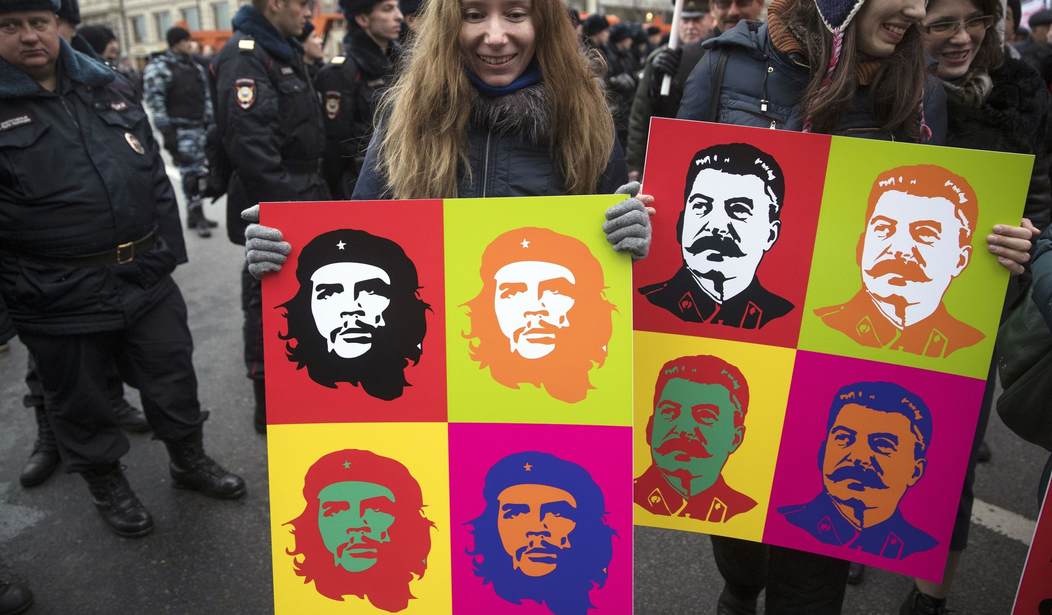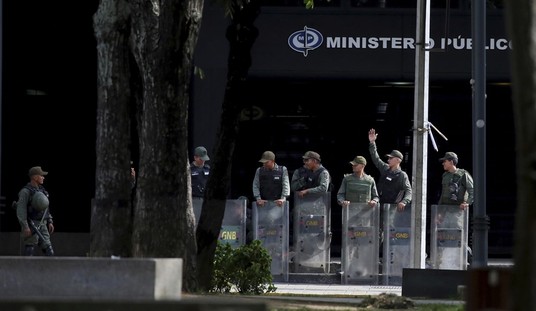“Commander Zero” died at 83, largely forgotten by the media. “Edén Pastora, a hero of the 1979 Sandinista revolution in Nicaragua who was known by his nom de guerre, Commander Zero — and who later turned against his victorious comrades in arms in a long counterrevolutionary war of words and guerrilla attacks that failed to budge the socialist regime in Managua — died early Tuesday in a military hospital in that city, the capital of Nicaragua. He was 83.”
Nobody is sure what he actually died of. Some say Covid-19; some say bronchopneumonia. No one really cares. Yet in 1983 his media star shone so brightly a poseur styling himself “the Commander Zero of the Philippines” dated an American heiress on the West Coast (wearing a hat with a feather-like Robin Hood) largely on the strength of radical chic stolen from Eden Pastora.
What is radical chic?
“Radical chic” is a term coined by journalist Tom Wolfe in his 1970 essay “Radical Chic: That Party at Lenny’s” to describe the adoption and promotion of radical political causes by celebrities, socialites, and high society. In languages such as American English, French and Italian the term has become widely used to indicate people identifying themselves as socialists or radical leftists while conducting upper-class lifestyles.
Unlike dedicated activists, revolutionaries, or dissenters, those who engage in “radical chic” remain frivolous political agitators—ideologically invested in their cause of choice only so far as it advances their social standing.
The concept has been described as “an exercise in double-tracking one’s public image: on the one hand, defining oneself through committed allegiance to a radical cause, but on the other, vitally, demonstrating this allegiance because it is the fashionable, au courant way to be seen in moneyed, name-conscious Society.”
The adulation of the rich provided 20th-century radicals the chance to become not merely heroes of the masses but icons of style. People may not remember him now, but Carlos the Jackal was quite the international celebrity. Nine books, some fictional, featured Carlos as a character, including one by Tom Clancy. That’s in addition to ten movies. Even after being captured, Carlos had no shortage of admirers.
In 2001, after converting to Islam,[44] Ramírez Sánchez married his lawyer, Isabelle Coutant-Peyre, in a Muslim ceremony, although he was still married to his second wife.
In June 2003, Carlos published a collection of writings from his jail cell. The book, whose title translates as Revolutionary Islam, seeks to explain and defend violence in terms of class conflict. In the book, he voices support for Osama bin Laden and his attacks on the United States.
Shining Path supremo Abimael Guzman is from the same universe. This physically hideous man directed his revolutionary killings in Peru from the house of a beautiful upper-class dance teacher who shielded him.
Theodore Dalrymple an English journalist has written that “the worst brutality I ever saw was that committed by Sendero Luminoso (Shining Path) in Peru, in the days when it seemed possible that it might come to power. If it had, I think its massacres would have dwarfed those of the Khmer Rouge. As a doctor, I am accustomed to unpleasant sights, but nothing prepared me for what I saw in Ayacucho, where Sendero first developed under the sway of a professor of philosophy, Abimael Guzmán.” …
In 1992, during the first administration of President Alberto Fujimori, the National Directorate Against Terrorism (DIRCOTE) began casing several residences in Lima because agents suspected that terrorists were using them as safehouses. One of those residences, in the upper-class neighborhood of Surco, had been operating as a ballet studio. The DIRCOTE operatives routinely searched the garbage taken out from the house. The house was supposedly inhabited by only one person, the dance teacher Maritza Garrido Lecca, but it was soon noticed that the household produced more garbage than one person could account for. Furthermore, agents found discarded tubes of cream for the treatment of psoriasis, an ailment that Guzmán was known to have.
The dramatic elements of the story were so compelling a movie was produced based on Guzman’s capture, starring Javier Bardem, called The Dancer Upstairs. The movie never quite explains the svengali-like influence of the Maoist leader over his followers, only portrays it as so powerful one of them kills the priest who baptized her on video to prove her commitment to the supremo. We can’t understand the attraction because we lack the passion.
He just does what he wants with them, and they let him.
– How do you know? – This broad from Tacna.
She hears things. Man, it’s no world revolution. It’s a f*ck-athon.
He’s in the jungle.
He’s in the mountains.
He’s every tick of every clock.
He’s every breeze in every tree.
He’s every sun which refuses to set.
We, like the cop in Dancer Upstairs, can’t understand because of some defect in our spiritual condition. This comes closer to expressing the true nature of radical chic than as a mere fashion accessory. It is a genuine search for absolution by people guilt-ridden by a prosperous condition they are unwilling to leave. Instead, they resort to proxy methods and if they must renounce their baptism to obtain forgiveness, they’ll do it. That’s why so many film biographies of Third-World revolutionaries are hagiographies because they are about saints astonished to find themselves canonized. When Hollywood did a movie on Che, they got Benicio del Toro to play him.
On 12 December 2008, Che was screened at New York City’s sold out 1,100 person Ziegfeld Theater. Upon seeing the first image on the screen (a silhouette of Cuba), the crowd erupted into a raucous cry of “¡Viva, Cuba!” Following the film, and the standing ovation it received, Soderbergh appeared for a post program Q&A. During the sometimes contentious conversation with the audience, in which Soderbergh alternated between defensiveness and modesty, the director categorized Guevara as “a hard ass”, to which one audience member yelled out, “Bullshit, he was a murderer!” The filmmaker settled down the crowd and explained, “It doesn’t matter whether I agree with him or not—I was interested in Che as a warrior, Che as a guy who had an ideology, who picked up a gun and this was the result.
Maybe Soderbergh had a point about Che. Nobody cares about the actual man any more than the dying old Eden Pastora. What they cared about was the symbol. It doesn’t have to be factually accurate. It need not be linked to an actual cause or even a real country on a map. It’s not important whether the real Commander Zero actually wore a feather, like Robin Hood. For in truth he lived in an imaginary place. What mattered to the chic was absolution from radicals who, if pressed, would admit they had no right to give it. But the radicals took the alms and hurried on.
Follow Wretchard on Twitter or visit Wretchard.com
Editor’s Note: Want to support PJ Media so we can keep telling the truth about China and the virus they unleashed on the world? Join PJ Media VIP and use the promo code WUHAN to get 25% off your VIP membership.
Support the Belmont Club by purchasing from Amazon through the links below.
Books:
The Case for Christ: A Journalist’s Personal Investigation of the Evidence for Jesus, by Lee Strobel. Is there credible evidence that Jesus of Nazareth really is the Son of God? Former atheist and Chicago Tribune journalist Strobel takes an investigative look at the evidence from the fields of science, philosophy, and history.
Lincoln at Gettysburg: The Words that Remade America, by Garry Wills. By examining both the address and Lincoln in their historical moment and cultural frame, Wills breathes new life into Lincoln’s words and reveals much about a president so mythologized but often misunderstood. He shows how Lincoln came to change the world, how his words had to and did complete the work of the guns, and how Lincoln wove a spell that has not yet been broken.
The Madness of Crowds: Gender, Race and Identity, by Douglas Murray. The book examines the twenty-first century’s most divisive issues: sexuality, gender, technology and race, and reveals the astonishing new culture wars playing out in our workplaces, universities, schools and homes in the names of social justice, identity politics and ‘intersectionality’.
For a list of books most frequently purchased by readers, visit my homepage.
Did you know that you can purchase some of these books and pamphlets by Richard Fernandez and share them with your friends? They will receive a link in their email and it will automatically give them access to a Kindle reader on their smartphone, computer or even as a web-readable document.
Open Curtains by George Spix and Richard Fernandez. Technology represents both unlimited promise and menace. Which transpires depends on whether people can claim ownership over their knowledge or whether human informational capital continues to suffer the Tragedy of the Commons.
The War of the Words, Understanding the crisis of the early 21st century in terms of information corruption in the financial, security and political spheres
Rebranding Christianity, or why the truth shall make you free
The Three Conjectures, reflections on terrorism and the nuclear age
Storming the Castle, why government should get small
No Way In at Amazon Kindle. Fiction. A flight into peril, flashbacks to underground action.
Storm Over the South China Sea, how China is restarting history in the Pacific.










Join the conversation as a VIP Member